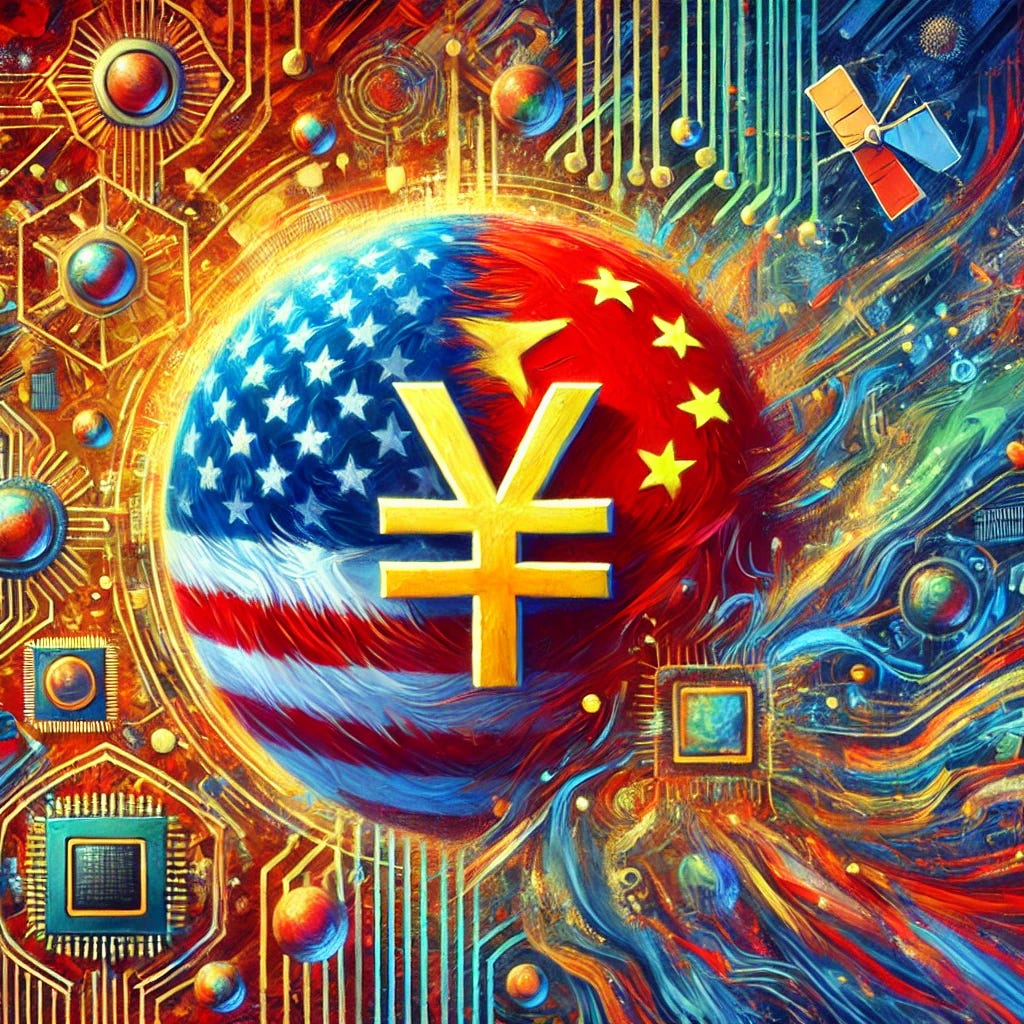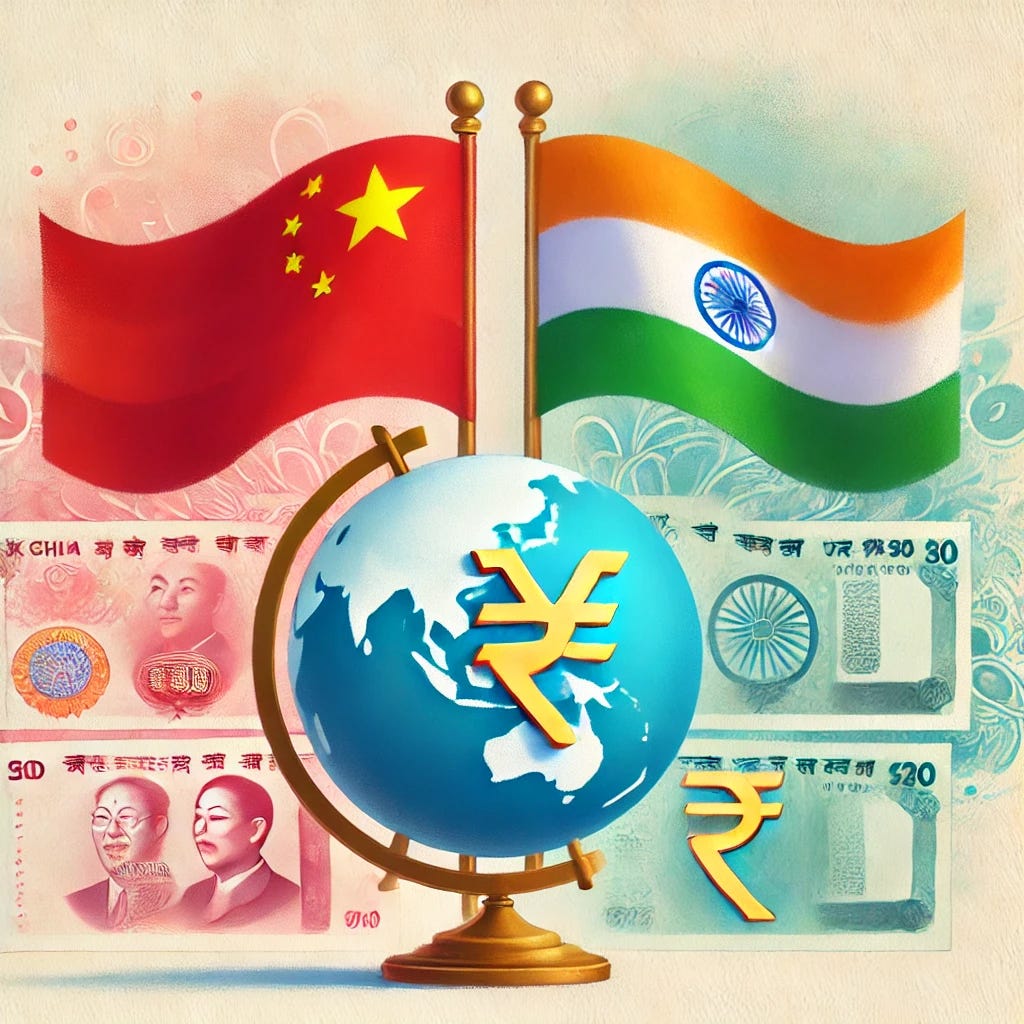China's Economic Challenges
China's economy is currently facing significant challenges, particularly in its real estate sector, which has been a key driver of growth for decades. The country's macroeconomic landscape is characterized by a complex interplay of factors, including a property market downturn, currency fluctuations, and global trade tensions. This article touches upon the various aspects of China's economic difficulties, the government's response, and the lessons India can draw from these developments.
Housing Sector Crisis
The Chinese property market is experiencing a severe and prolonged slump, with far-reaching implications for the broader economy. The scale of the problem is staggering. Unsold housing in 100 major cities totaled 511.8 million square meters at the end of February 2024, which is roughly ten times the total office space in Manhattan. According to Goldman Sachs, it would cost approximately 7.7 trillion yuan (about $1.1 trillion) to purchase enough apartments to bring China's inventory of empty homes back to 2018 levels, assuming a 50% discount on current market prices.
Moreover, Chinese developers are in dire need of an estimated $553 billion to complete pre-sold housing projects that remain unfinished. Despite the government's 300 billion yuan ($42 billion) bailout plan, the scale of the crisis suggests that this may be insufficient. The property sector's downturn has led to a significant slowdown in consumer spending and overall economic growth, further exacerbating the country's economic woes.
Currency and Trade Issues
In recent times, the yuan has been strengthening, which presents challenges for Chinese exporters. The offshore yuan traded in Hong Kong surged to its strongest level for 2024, briefly dropping below 7.1 against the U.S. dollar. While a stronger yuan may reflect confidence in China's economy, it is making Chinese exports less competitive in international markets.
Many trading firms, especially smaller ones, are now opting to avoid accepting orders rather than risk taking unprofitable ones due to the stronger yuan. This reluctance to engage in trade under unfavourable conditions is contributing to a slowdown in export growth, putting further pressure on the economy.
Inflation and Interest Rates
China's inflation rate has remained relatively low, with consumer prices rising by 0.5% year-over-year in July 2024, which was higher than expected but still modest. At the same time, the producer price index declined by 0.8% year-over-year in July. To stimulate the economy, the government has kept interest rates low, but this policy has created challenges for banks and increased the appeal of the yuan for carry trades.
The low inflation and interest rates have had mixed effects on the economy. While they have helped to keep borrowing costs low, they have also led to concerns about the long-term stability of the banking sector and the overall financial system.
Banking Sector Concerns
The banking sector in China is grappling with significant challenges. Non-performing loans (NPLs) are expected to rise, with S&P Global projecting that the commercial banking sector's non-performing asset (NPA) ratio will increase to 5.75% by 2026 from an estimated 5.55% in 2023. Additionally, local government financing vehicle (LGFV) debt remains a major concern, with an estimated stock of weak-linked LGFV debt amounting to about 32 trillion yuan.
Smaller banks are particularly vulnerable in this environment. Recently, 40 smaller institutions have been absorbed into larger entities as part of efforts to improve stability in the banking sector. This consolidation is seen as necessary to prevent further financial instability, but it also highlights the severity of the issues facing China's financial system.
Government Policy Response
In response to these challenges, the Chinese government has implemented several measures aimed at stabilizing the economy. The 300 billion yuan bailout plan for the property sector is one such initiative, though its effectiveness remains in question given the magnitude of the crisis. Further restructuring of LGFV debt is also anticipated, likely concentrated in regions with the heaviest debt burdens.
In the banking sector, consolidation efforts are ongoing, with smaller banks being merged into larger institutions to enhance stability. On the trade front, the government is allowing the yuan to appreciate gradually while still providing support to exporters, aiming to strike a balance between maintaining export competitiveness and ensuring financial stability.
Impact on Exports
The strengthening yuan is exerting pressure on Chinese exporters, leading to a slowdown in export growth. July's export figures fell below expectations, with many companies struggling to maintain profitability amid currency fluctuations. In response, some firms are adopting more sophisticated hedging strategies to manage currency risks, though this is not a viable solution for all businesses.
The challenges faced by exporters are further compounded by the global trade environment, which remains uncertain due to ongoing tensions and disruptions. This situation is likely to persist, adding another layer of complexity to China's economic recovery.
Impact of U.S. Sanctions and Trade Policies
The Chinese economy is currently navigating a complex web of challenges exacerbated by U.S. sanctions and trade policies. The Biden administration has ramped up tariffs on a range of Chinese products, including semiconductors, electric vehicles, and solar cells. These measures are part of a broader strategy to counter China's alleged unfair trade practices and protect American industries. By increasing tariffs—such as raising those on semiconductors from 25% to 50% by 2025 and doubling tariffs on solar cells to 50% in 2024—the U.S. aims to curb China's dominance in critical sectors. This escalation in tariffs is expected to disrupt Chinese exports significantly, making their products less competitive in the U.S. market. Consequently, these tariffs could lead to a slowdown in China's industrial output and overall economic growth.
Currency Pressures and Export Challenges
The strength of the U.S. dollar, bolstered by high interest rates, further complicates the economic landscape for China. The Federal Reserve's tight monetary policy has led to a strong dollar, making Chinese goods more expensive in international markets. This currency dynamic presents significant challenges for Chinese exporters, who now face higher costs and reduced demand for their products abroad. Additionally, the Japanese yen's relative weakness against the dollar adds another layer of complexity, as it enhances the competitiveness of Japanese goods over Chinese products, thereby eroding China's market share in key export markets.
Supply Chain Diversification and Economic Decoupling
U.S. companies are increasingly diversifying their supply chains to reduce dependence on China. Major corporations are shifting manufacturing bases to Southeast Asia and India, driven by the need for supply chain resilience and geopolitical considerations. This trend is part of a broader strategy to mitigate risks associated with U.S.-China trade tensions and to capitalize on the growing manufacturing capabilities in these regions. The relocation of manufacturing hubs is likely to result in a gradual decoupling of the U.S. and Chinese economies, impacting China's export-driven growth model. This decoupling represents a strategic shift that could have long-term implications for China's economic trajectory.
Geopolitical Tensions and Economic Uncertainty
Geopolitical tensions further strain China's economic prospects. The Taiwan issue remains a significant flashpoint, with potential military confrontations posing risks to regional stability and global supply chains, particularly in the semiconductor industry. The ongoing Ukraine conflict and the Gaza Hamas-Israel conflict contribute to global economic uncertainty, which can indirectly affect China's trade and investment flows. Furthermore, China's close relationship with Russia amid international sanctions against Moscow complicates its diplomatic and economic engagements with Western countries, potentially leading to further economic isolation.
Strategic Adjustments and Policy Implications
In summary, the combination of U.S. sanctions, a strong dollar, shifting manufacturing bases, and geopolitical tensions presents a formidable challenge to the Chinese economy. These factors collectively threaten to undermine China's export competitiveness, disrupt its industrial output, and strain its financial stability. The situation calls for strategic adjustments in China's economic policies and a re-evaluation of its global trade and diplomatic strategies. To navigate these multifaceted challenges effectively, China may need to focus on domestic economic resilience, explore new markets, and engage in more nuanced diplomatic efforts to mitigate the impact of these external pressures.
Lessons for India
India can draw several important lessons from China's current economic challenges. First, it is crucial to avoid over-reliance on any single sector, such as real estate, for economic growth. Diversification across multiple sectors can help mitigate the impact of downturns in any one area.
Second, maintaining a robust and well-regulated banking sector is essential to prevent the accumulation of bad loans and other financial vulnerabilities. India's banking sector should be vigilant in monitoring and managing risks to ensure long-term stability.
Third, balanced economic growth is vital. Focusing on both domestic consumption and exports can create a more resilient economy that is better able to withstand external shocks. Additionally, careful currency management policies are necessary to balance export competitiveness with financial stability.
Finally, proactive policy-making is key. Addressing economic challenges early, rather than allowing problems to accumulate, can help prevent crises and support sustained economic growth.
Strategic Lessons and Opportunities for India
China is currently grappling with significant economic challenges, particularly in its property sector and banking system. While the government is making efforts to address these issues, the scale of the problems suggests that a full recovery may take considerable time. Additionally, China’s demographic profile, heavily influenced by the one-child policy enforced from the 1980s till 2015, is now characterized by an ageing population. In contrast, nearly two-thirds of India's population is under the age of 35, presenting both a challenge and an opportunity.
As an emerging economic power, India can draw valuable lessons from China's experience in managing rapid growth and the associated risks. To capitalize on its youthful demographic, India must strategically manage its economy to ensure that its educated youth are absorbed into meaningful and productive employment, beyond the traditional scope of white-collar government jobs. By implementing inclusive and equitable growth policies, India, under the stable leadership of Prime Minister Narendra Modi, is well-positioned to navigate these challenges. With continued focus on economic reforms and innovation, India could potentially ascend to the position of the world's third-largest economy sooner than anticipated.
Citations
Goldman Sachs report on China's housing market, February 2024.
S&P Global projections on China's banking sector NPA ratios, 2023-2026.
Data on China's inflation and producer price index, July 2024.
[Information on China's 300 billion yuan bailout plan for the property sector](https://www.reuters.com/business/china-property-bailout-plan-202







Outstanding observation on economy..!!